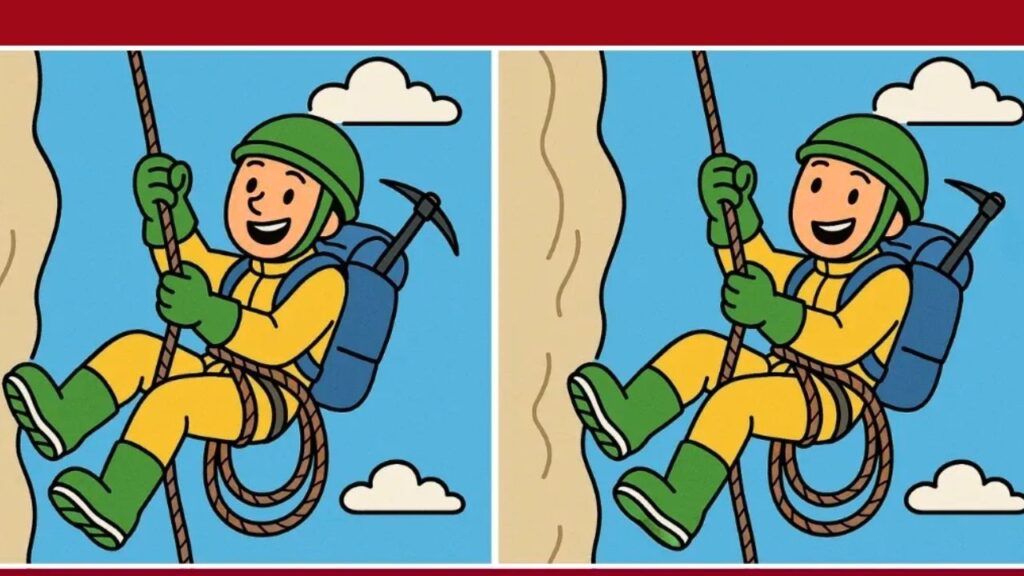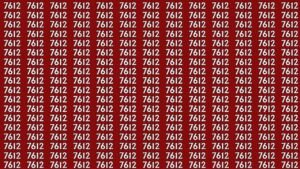Trekking through the mountains is thrilling—but adding a Spot the Difference puzzle makes it even more fun. In this challenge, you’ll examine two nearly identical trekking images and try to spot three subtle differences in just 7 seconds.
It’s a quick brain workout that sharpens focus, attention to detail, and visual memory—perfect for a short break or a warm-up before your next outdoor trip.
How the Challenge Works

You’ll see two images of a serene mountain trail: trekkers climbing a rocky path, fir trees lining the slope, and a crisp blue sky above snow-kissed peaks.
At first glance, both images look the same. Look closely: three tiny edits are hidden in the second image. Your mission is to find all 3 differences before the 7-second timer runs out.
Quick Facts (At a Glance)
| Feature | Detail |
|---|---|
| Theme | Trekking scene in alpine terrain |
| Goal | Find 3 differences between two images |
| Time Limit | 7 seconds (fast-focus challenge) |
| Difficulty | Moderate–High (subtle, object-level changes) |
| Best Strategy | Scan left-to-right, then top-to-bottom |
| Common Traps | Micro-shifts in gear, boots, expressions |
| Skills Trained | Observation, working memory, visual scanning |
Pro Tips to Spot Faster
- Divide the frame: Mentally split the image into zones (skyline, treeline, trail, gear). Check each zone in both pictures before moving on.
- Trace edges: Subtle changes often appear along edges—boot outlines, jacket seams, trekking poles, or tool handles.
- Look for symmetry: Faces, boots, and equipment usually have consistent shapes. A skewed angle or curve can be a giveaway.
- Save the tiny stuff for last: Scan big shapes first (backpacks, trees, rocks), then zoom into buckles, straps, or facial features.
Hints (If You’re Stuck)
- One change hides in a facial detail.
- Another is linked to footwear.
- The last tweak is on a tool used for icy terrain.
The Solution- 3 Hidden Differences

Could you spot all three within 7 seconds? Here are the solutions:
- Facial Expression Shift – The lead climber’s smile changes slightly between the two images, altering the cheek and mouth line.
- Right Boot Shape – The right boot silhouette is subtly different (toe curve/sole angle) in the second image.
- Ice Pick Handle Curve – The ice pick (or trekking tool) handle that appears straight in one image shows a faint bend in the other.
These are the classic micro-edits that make Spot the Difference puzzles addictive—small enough to hide in plain sight, yet obvious once you notice them.
Why This Puzzle Is Great for Your Brain
Short, time-boxed visual puzzles are a proven way to keep your cognitive skills sharp. You engage selective attention (filtering noise), visual discrimination (noticing tiny alterations), and working memory (holding the first image in mind while comparing).
For trekkers and outdoor lovers, it’s also a playful nod to real-world situational awareness—spotting loose rocks, reading weather signs, and tracking trail markers.
Make It a Mini Game With Friends
Turn the challenge into a friendly contest:
- Round 1: Standard 7-second limit.
- Round 2: Reduce to 5 seconds for advanced players.
- Round 3: Add a penalty—missed difference means a quick plank or wall sit (great for trekkers building strength!).
This Trekking Spot the Difference is a fast, fun way to train your observation skills.
With only 7 seconds on the clock and three cleverly hidden edits—facial expression, right boot shape, and ice pick handle—you’ll push your focus to the limit.
Keep practicing with similar challenges to boost visual attention, improve memory, and get mentally primed for your next mountain adventure.
FAQs
How many differences are there and how much time do I get?
There are 3 differences to find, and you have 7 seconds—a quick test of focus and speed.
What’s the best way to scan the images?
Use a grid approach: compare large shapes first (skyline, trees, bodies), then zoom into gear, boots, and faces—common spots for subtle edits.
Can kids play this challenge?
Absolutely. It’s family-friendly and great for building attention to detail. You can extend the time limit to 10–15 seconds for younger players.









